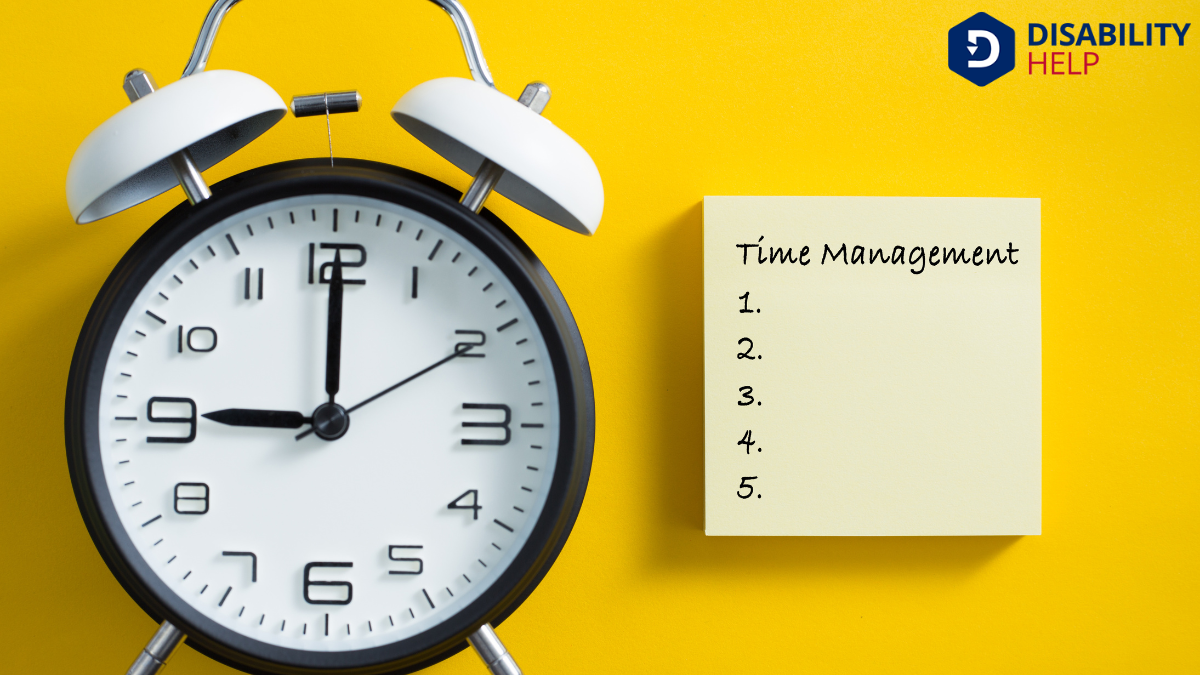Occupational therapy supports workplace accommodationsModifications or adjustments in healthcare settings to support patients with disabilities. by improving employee well-being and productivity, adapting work environments, and fostering supportive atmospheres. We assess individual needs and customize ergonomic solutions, integrating adaptive equipmentDevices that assist individuals with disabilities in performing ADLs, such as grab bars or shower ch... to enhance comfort and accessibilityThe design of products, devices, services, or environments to be usable by people with disabilities..... Our techniques include personalized time management strategies, encouraging mindfulness, and facilitating effective communication. By promoting mental health and evaluating accommodations over time, we guarantee inclusivity and effectiveness. Explore further to see how these practices contribute to a thriving workspace.
Key Takeaways
- Occupational therapy evaluates individual employee needs to tailor workplace accommodations.
- It customizes ergonomic solutions to reduce strain and enhance workplace accessibilityThe design of workplaces to be usable by individuals with disabilities, including physical access, t....
- Occupational therapists facilitate communication and foster supportive work environments.
- They develop personalized strategies for time management and mindfulness practices.
- Occupational therapy regularly assesses and adjusts workplace accommodations for effectiveness.
Understanding the Role of Occupational Therapy in the Workplace
When we think about occupational therapy in the workplace, it’s essential to recognize its role in enhancing employee well-being and productivity. We comprehend that occupational therapy helps employees perform their tasks more efficiently by adapting work environments to meet diverse needs.
It’s not just about physical modifications; it involves fostering a supportive atmosphere that considers mental health and ergonomic practices. Together, we can create workspaces that empower everyone.
Occupational therapists collaborate with us to identify barriers that hinder job performance. They suggest practical solutions to improve our daily work life. By focusing on the whole person, occupational therapists guarantee that each of us can thrive in our roles.
This holistic approach not only boosts morale but also leads to a more harmonious workplace.
Assessing Individual Employee Needs and Workplace Demands

Recognizing the importance of occupational therapy's all-encompassing approach, we now focus on the process of evaluating individual employee needs alongside workplace demands.
It's essential to reflect on both personal capabilities and the specific tasks each role requires. This dual assessment helps us identify any gaps or challenges an employee might face.
Tailoring Ergonomic Solutions for Enhanced Comfort
Let's explore how we can enhance comfort by tailoring ergonomic solutions to meet individual needs.
By customizing workspace adjustments and selecting the right adaptive equipment, we guarantee that employees work more efficiently and comfortably.
Together, we can create a more supportive and productive work environment.
Customized Workspace Adjustments
Although many of us spend countless hours at our desks, we often overlook the importance of a well-designed workspace tailored to our specific needs. Customizing our work environment can greatly improve our comfort and productivity.
As we work together with occupational therapists, they help us identify the adjustments that best suit our individual requirements.
Ergonomic modifications, such as adjusting chair height, positioning monitors at eye level, and ensuring proper lighting, can reduce strain and prevent discomfort. By making these changes, we can create a workspace that promotes better posture and minimizes fatigue.
Let’s remember that even small adjustments can make a big difference. Embracing these personalized solutions allows us to work more efficiently, with less physical stress, ultimately enhancing our overall well-being.
Adaptive Equipment Selection
How can we enhance our work experience with the right tools? By selecting adaptive equipment tailored to our unique needs, we can greatly improve comfort and productivity in the workplace.
Occupational therapy guides us in choosing ergonomic solutions, ensuring that our tools fit seamlessly into our daily routines.
Let’s explore some essential options:
- Adjustable chairs: Support proper posture and reduce back strain.
- Sit-stand desks: Encourage movement and flexibility during work hours.
- Ergonomic keyboards: Minimize wrist discomfort and prevent repetitive strain injuries.
- Monitor stands: Align screens at eye level to reduce neck fatigue.
- Footrests: Offer additional support for improved circulation.
Integrating Adaptive Equipment for Inclusive Work Environments
As we explore how adaptive equipment can create more inclusive work environments, we first need to assess the ergonomic benefits it offers.
By customizing adaptive tools, we can address individual needs and enhance workplace accessibility.
Let’s consider how these tailored solutions not only improve comfort but also boost productivity for everyone.
Ergonomic Assessment Benefits
When we consider the modern workplace, the importance of ergonomic assessments can't be overstated. They help us create safer, more efficient work environments by identifying potential health risks and discomforts.
By addressing these issues, we can enhance productivity and employee well-being. Let’s explore some benefits of ergonomic assessments:
- Reduced Risk of Injury: Identifying and mitigating hazards decreases the likelihood of workplace injuries.
- Increased Comfort: Tailored adjustments help employees work comfortably, reducing strain and fatigue.
- Enhanced Productivity: Employees perform better when their workstations support their physical needs.
- Improved Employee Satisfaction: A comfortable work environment fosters positive morale and job satisfaction.
- Cost Savings: Preventing injuries and enhancing efficiency can lead to lower healthcare costs and fewer absences.
Customizing Adaptive Tools
Adapting our work environments to be more inclusive is essential, and customizing adaptive tools plays a significant role in this effort. By integrating personalized equipment, we can address individual needs and enhance productivity for everyone.
Occupational therapists collaborate with us to identify specific challenges and recommend tools that provide the right support. For instance, adjustable desks, alternative keyboards, or specialized seating can transform the workplace experience.
We must remember, though, that customization isn't just about the tools themselves; it's about understanding how each tool fits into the broader context of our work environment.
Let's work together to guarantee these adaptations aren't only available but also adequately tailored to fit each employee's unique needs, promoting an inclusive and supportive workplace for all.
Developing Personalized Time Management Strategies

Even though time management might seem straightforward, developing personalized strategies can greatly enhance productivity and well-being in the workplace.
We must remember that everyone’s needs and strengths differ, and our strategies should reflect that individuality.
Let’s tailor approaches that align with how we work best. Here’s how we can start:
- Prioritize tasks: Focus on what's truly important and tackle those first.
- Set realistic goals: Break larger tasks into manageable steps to avoid feeling overwhelmed.
- Utilize technology: Leverage apps and tools to keep track of time and tasks efficiently.
- Schedule breaks: Guarantee regular breaks to maintain energy and focus throughout the day.
- Reflect and adjust: Regularly assess what’s working and what’s not, making necessary adjustments.
These strategies can empower us to thrive.
Implementing Effective Stress Reduction Techniques
Let's explore how we can reduce stress at work through mindfulness practices and breathing exercises.
By incorporating these techniques, we can enhance our focus and overall well-being.
Together, we'll find simple ways to create a more relaxed and productive work environment.
Mindfulness Practices at Work
While maneuvering through the demands of the modern workplace, incorporating mindfulness practices can greatly enhance our ability to manage stress effectively.
Mindfulness helps us remain present and focused, reducing anxiety and improving well-being. By integrating these practices, we can cultivate a more balanced and productive work environment.
Let's explore some practical mindfulness techniques we can adopt:
- Daily Meditation: Set aside a few minutes each day to meditate, helping us clear our minds and regain focus.
- Mindful Listening: Fully engage in conversations without distractions, fostering better communication and understanding.
- Body Scans: Regularly check in with our bodies to identify and release tension.
- Mindful Walking: Take short walks, paying attention to our surroundings and breathing.
- Gratitude Journaling: Reflect on positive aspects of our day, boosting our mood and perspective.
Breathing Exercises for Relaxation
Building on the mindfulness practices we've explored, breathing exercises offer another powerful tool for managing workplace stress. By focusing on our breath, we can calm our minds and bodies, helping us navigate tense situations with greater ease.
Let’s start with a simple technique: inhale deeply through the nose, hold for a few seconds, and exhale slowly through the mouth. This practice can lower stress levels and increase our ability to concentrate.
Additionally, try box breathing. Inhale for four counts, hold for four, exhale for four, and pause for four more. This rhythmic pattern reduces anxiety and enhances focus.
Facilitating Communication Between Employees and Employers
Effective communication between employees and employers is essential for creating a supportive workplace environment, especially when it comes to implementing occupational therapy and accommodations.
When we communicate clearly, it helps guarantee everyone understands the needs and expectations involved.
Let’s explore some strategies that can enhance this communication:
- Schedule regular check-ins: Frequent meetings help address concerns and monitor progress.
- Use clear, concise language: Avoid jargon to make sure everyone’s on the same page.
- Encourage feedback: Create a space where both parties can share thoughts and suggestions.
- Leverage technology: Utilize tools like email or messaging apps for quick updates.
- Document agreements: Keep written records of discussions to prevent misunderstandings.
Promoting Mental Health and Well-being at Work

As we turn our focus to promoting mental health and well-being at work, it’s important to recognize that a supportive environment doesn't just happen on its own.
We need to actively create spaces where everyone feels valued and understood. Occupational therapy can play a vital role by helping us identify stressors and suggesting practical solutions.
For instance, we might implement flexible work schedules or design quiet areas for relaxation. Encouraging open conversations about mental health can also reduce stigmaThe negative attitudes and discrimination faced by individuals with disabilities due to societal ste... and foster a culture of empathyThe ability to understand and share the feelings of another, particularly important in understanding....
Let's prioritize regular check-ins, where team members can voice concerns without fear. By doing so, we not only enhance individual well-being but also boost overall productivity.
Together, we can cultivate a workplace where mental health thrives.
Training and Educating Staff on Inclusive Practices
Recognizing the importance of mental health in the workplace sets the stage for our next focus: training and educating staff on inclusive practices.
We've got to guarantee everyone feels valued and understood. By fostering an inclusive environment, we not only enhance productivity but also contribute to a healthier work culture.
So, how do we achieve this? Let's break it down:
- Conduct workshops that highlight diverse needs and perspectives.
- Implement mentorship programsPrograms that pair individuals with disabilities with experienced professionals to provide guidance ... that encourage collaboration and understanding.
- Utilize role-playing exercises to practice empathy and effective communication.
- Provide resources and materials that educate on various disabilities and accommodations.
- Create feedback loops to continuously refine and adaptA grassroots disability rights organization in the U.S. that focuses on promoting community-based se... our practices.
Evaluating the Impact of Workplace Accommodations Over Time
While we've implemented various workplace accommodations, it’s crucial to evaluate their long-term impact to guarantee they're truly beneficial.
We must regularly assess whether these changes enhance productivity, employee satisfaction, and overall workplace harmony. By collecting feedback from employees and supervisors, we can identify areas of improvement or success. This ongoing evaluation allows us to make data-driven decisions, ensuring accommodations remain effective and relevant.
Let's not forget the importance of involving occupational therapists in this process. Their expertise helps us interpret feedback and adjust strategies to meet evolving needs.
Conclusion
In summary, we've seen how occupational therapy can play an essential role in enhancing workplace accommodations. By evaluating individual needs and crafting ergonomic and adaptive solutions, we can guarantee comfort and inclusivity. Our efforts in time management, communication, and mental well-being foster a supportive environment. Let's continue training and educating our teams to embrace inclusive practices and regularly evaluate our strategies to confirm their effectiveness. Together, we're building a more accommodating and productive workplace for everyone.






